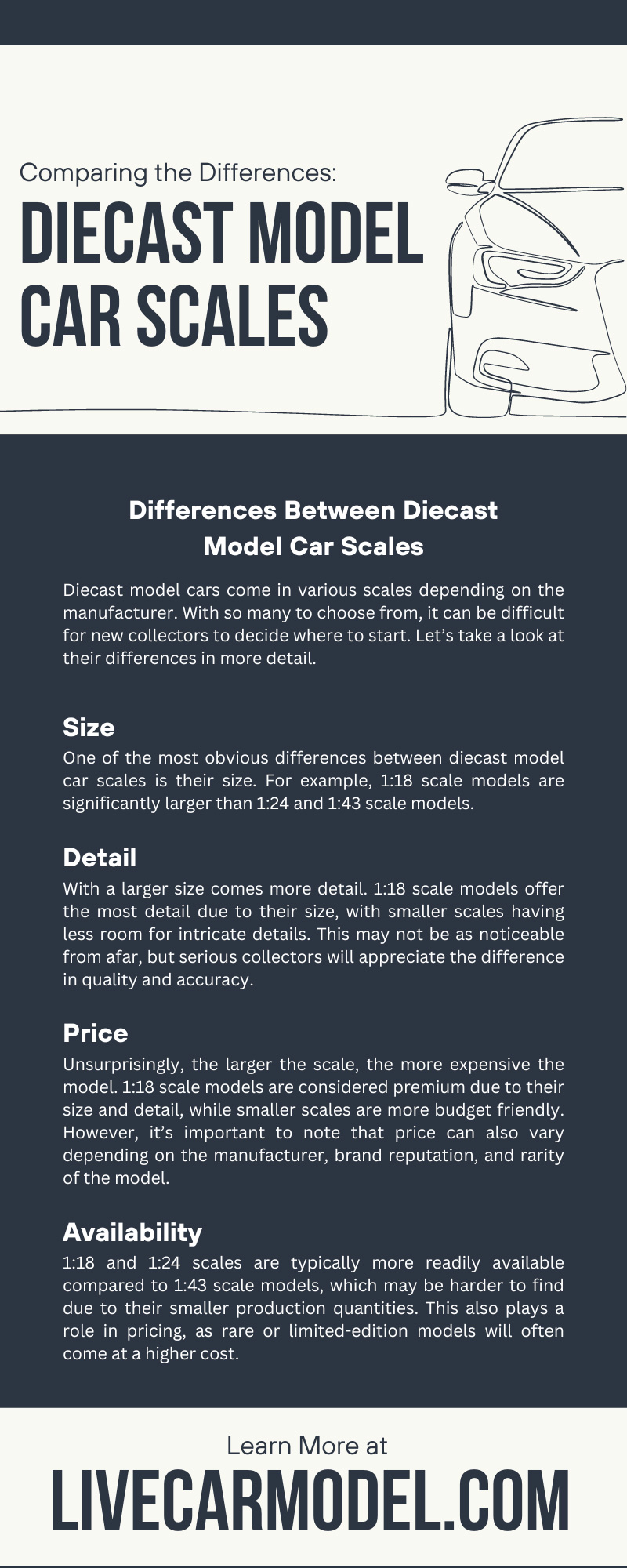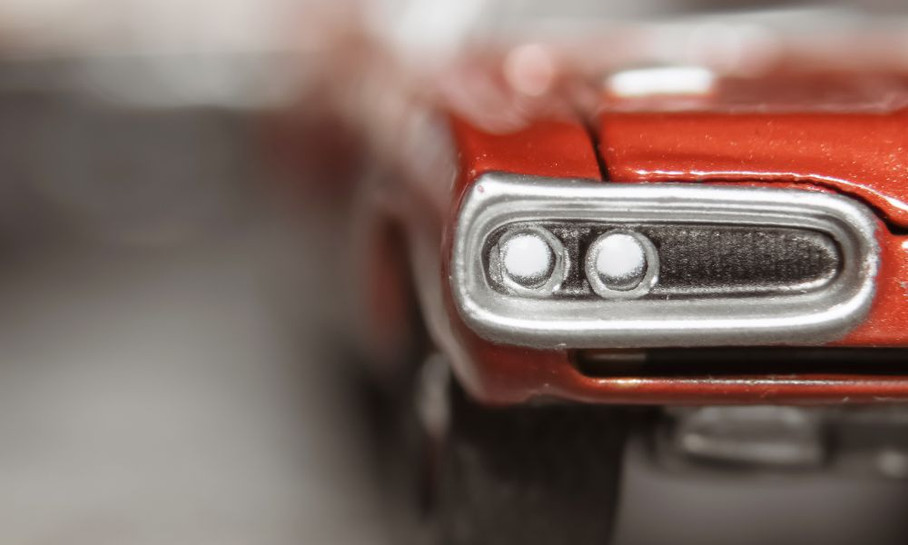When it comes to diecast model cars, one of the most important things to consider is the scale. Scale refers to the ratio of the size of a model car compared to its real-life counterpart. Choosing the right scale for your diecast collection is crucial in creating an accurate and realistic display.
In this blog, we’ll compare the differences in diecast model car scales and the benefits of each to give you a better understanding of which is best suited for your collection.
What Is Scale?
Scale is a method used to represent objects in smaller or larger proportions compared to their actual size. In the case of diecast model cars, it’s the ratio between the size of a model car and its real-life counterpart. For example, a 1:18 scale diecast car means that one inch on the model represents 18 inches on the actual car. Knowing which Scale you want, and why will help you curate a diecast model car collection you can be proud of.
Differences Between Diecast Model Car Scales
Diecast model cars come in various scales depending on the manufacturer. With so many to choose from, it can be difficult for new collectors to decide where to start. Let’s take a look at their differences in more detail.
Size
One of the most obvious differences between diecast model car scales is their size. For example, 1:18 scale models are significantly larger than 1:24 and 1:43 scale models. This means that they require more storage space and may not be suitable for those with limited display space or who prefer a more compact collection.
Detail
With a larger size comes more detail. 1:18 scale models offer the most detail due to their size, with smaller scales having less room for intricate details. This may not be as noticeable from afar, but serious collectors will appreciate the difference in quality and accuracy.
Price
Unsurprisingly, the larger the scale, the more expensive the model. 1:18 scale models are considered premium due to their size and detail, while smaller scales are more budget friendly. However, it’s important to note that price can also vary depending on the manufacturer, brand reputation, and rarity of the model. Choosing your preferred scale based on your budget will allow you to save money on your collection over time.
Availability
Another consideration when choosing a diecast model car scale is availability. 1:18 and 1:24 scales are typically more readily available compared to 1:43 scale models, which may be harder to find due to their smaller production quantities. This also plays a role in pricing, as rare or limited-edition models will often come at a higher cost.
Customization
The scale can also play a factor for those who like to customize their models. Due to their larger size and more intricate details, 1:18 scale models are easier to customize compared to smaller scales. However, with the rise of 3D printing technology, customization options for all scales are becoming more accessible, allowing hobbyists to tailor their collections in unique ways.
The Most Commonly Used Scales
Some diecast model car scales are much more popular than others. The most commonly used scales are 1:18, 1:24, and 1:43. Let’s take a closer look at each of these scales and their differences.
1:18 Scale
The 1:18 scale is popular among collectors because of its large size and high level of detail. These models typically measure around 9-10 inches long and are highly sought after. However, because of their size and level of detail, they tend to be more expensive than other scales.
1:24 Scale
1:24 is slightly smaller than the 1:18 scale, with models measuring around 7-8 inches long. They still offer a nice amount of detail but are more affordable compared to 1:18 scale models. This scale is also common in model car kits, allowing collectors to build and customize their own models.
1:43 Scale
The smallest of the commonly used scales, the 1:43 proportion, is popular among collectors who have limited space or want to collect a more models. These models typically measure around 4-5 inches in length and are less expensive than the larger scales. However, because of their smaller size, they may not offer as much detail as the larger scales.
Other Scales
Apart from the above commonly used scales, other scales are available for diecast model cars, such as 1:12, 1:64, and 1:87. These scales are not as popular but still offer unique options for collectors. Let’s take a quick look at each of them.
1:12 Scale
1:12 is one of the largest scales available, with models measuring around 14-15 inches long. These models offer a high level of detail and are often considered premium collectibles because of their size and intricacy. However, they are also the most expensive among all the scales.
1:64 Scale
1:64 is commonly known as the “Hot Wheels” scale and is popular among children and casual collectors. These models are relatively small, measuring around 3 inches long. However, they’re affordable and come in a wide variety of designs, making them a fun option for people of all ages.
1:87 Scale
The 1:87 scale is the smallest, with models measuring about 2 inches long. These models are often used in model train displays and are not as common among diecast collectors. However, they offer a unique option for those interested in building dioramas or creating realistic scenes.
Choosing the Right Scale for Your Collection
When it comes to choosing the right scale for your diecast collection, there is no one-size-fits-all answer. It ultimately depends on personal preference and what you want to achieve with your display. If you’re looking for highly detailed models to showcase, the 1:18 or 1:24 scales may be the best option. If you have limited space but still want to collect a variety of models, the smaller scales, such as 1:43 or 1:64, may be more suitable.
Find the Best Scale for Your Collection
Scale plays a crucial role in diecast model cars, and their differences can greatly impact your collection. Avid enthusiasts interested in purchasing a Ferrari, Lamborghini, or Mercedes model toy car may want something more detailed, while beginners or young people can probably make do with something simpler.
Whether you prefer larger, more detailed models or smaller, affordable options, comparing the differences in diecast model car scales is crucial. That way, the next time you add something to your diecast collection, you’ll have all the knowledge you need to choose wisely!


